Alexandra Kearney
What Should I Know? Using Meta-gradient Descent for Predictive Feature Discovery in a Single Stream of Experience
Jun 13, 2022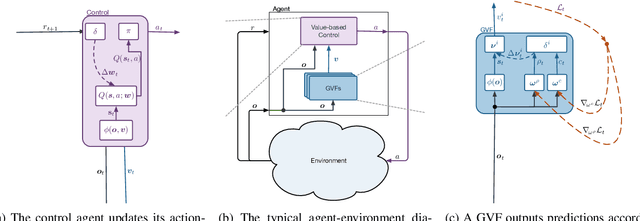
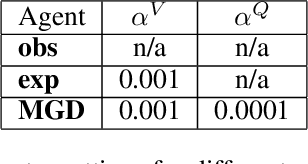
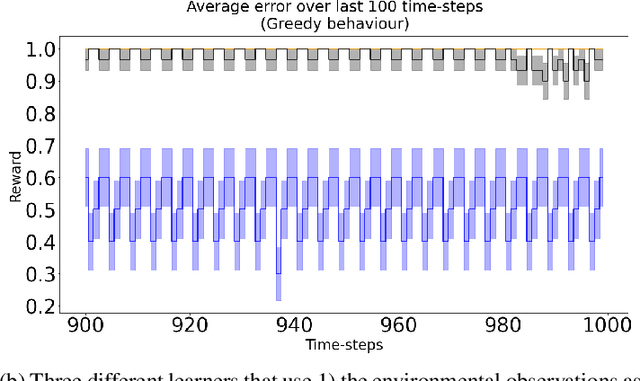
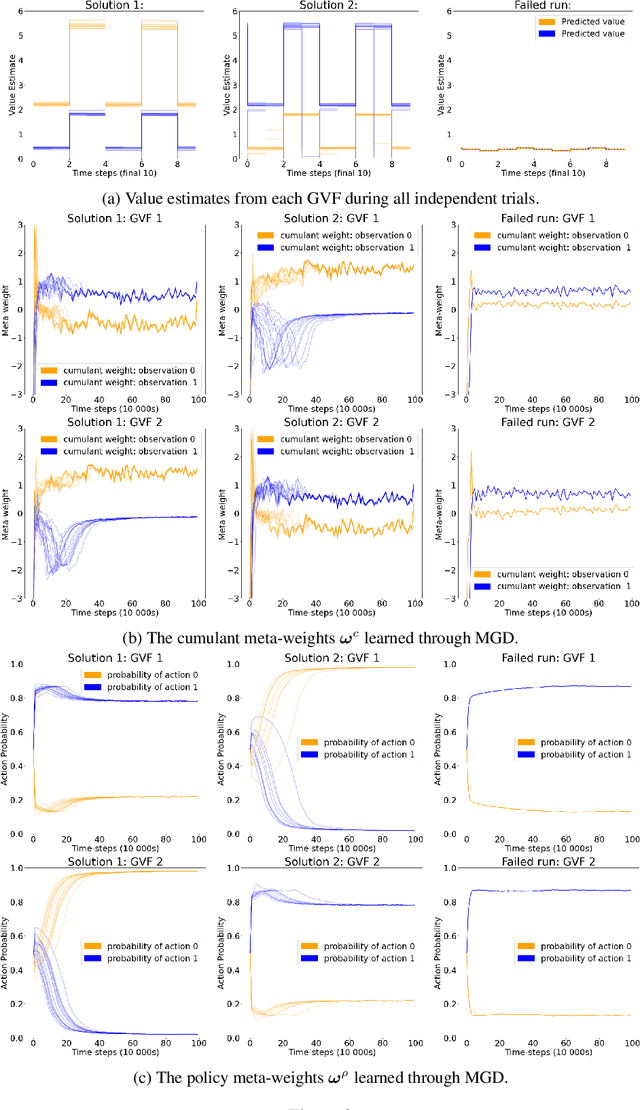
Abstract:In computational reinforcement learning, a growing body of work seeks to construct an agent's perception of the world through predictions of future sensations; predictions about environment observations are used as additional input features to enable better goal-directed decision-making. An open challenge in this line of work is determining from the infinitely many predictions that the agent could possibly make which predictions might best support decision-making. This challenge is especially apparent in continual learning problems where a single stream of experience is available to a singular agent. As a primary contribution, we introduce a meta-gradient descent process by which an agent learns 1) what predictions to make, 2) the estimates for its chosen predictions, and 3) how to use those estimates to generate policies that maximize future reward -- all during a single ongoing process of continual learning. In this manuscript we consider predictions expressed as General Value Functions: temporally extended estimates of the accumulation of a future signal. We demonstrate that through interaction with the environment an agent can independently select predictions that resolve partial-observability, resulting in performance similar to expertly specified GVFs. By learning, rather than manually specifying these predictions, we enable the agent to identify useful predictions in a self-supervised manner, taking a step towards truly autonomous systems.
Temporal-Difference Learning to Assist Human Decision Making during the Control of an Artificial Limb
Sep 18, 2013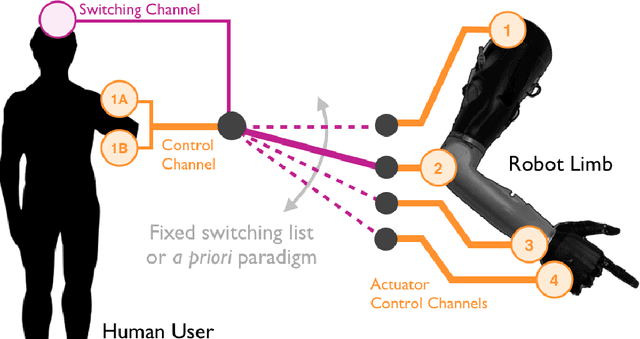



Abstract:In this work we explore the use of reinforcement learning (RL) to help with human decision making, combining state-of-the-art RL algorithms with an application to prosthetics. Managing human-machine interaction is a problem of considerable scope, and the simplification of human-robot interfaces is especially important in the domains of biomedical technology and rehabilitation medicine. For example, amputees who control artificial limbs are often required to quickly switch between a number of control actions or modes of operation in order to operate their devices. We suggest that by learning to anticipate (predict) a user's behaviour, artificial limbs could take on an active role in a human's control decisions so as to reduce the burden on their users. Recently, we showed that RL in the form of general value functions (GVFs) could be used to accurately detect a user's control intent prior to their explicit control choices. In the present work, we explore the use of temporal-difference learning and GVFs to predict when users will switch their control influence between the different motor functions of a robot arm. Experiments were performed using a multi-function robot arm that was controlled by muscle signals from a user's body (similar to conventional artificial limb control). Our approach was able to acquire and maintain forecasts about a user's switching decisions in real time. It also provides an intuitive and reward-free way for users to correct or reinforce the decisions made by the machine learning system. We expect that when a system is certain enough about its predictions, it can begin to take over switching decisions from the user to streamline control and potentially decrease the time and effort needed to complete tasks. This preliminary study therefore suggests a way to naturally integrate human- and machine-based decision making systems.
 Add to Chrome
Add to Chrome Add to Firefox
Add to Firefox Add to Edge
Add to Edge